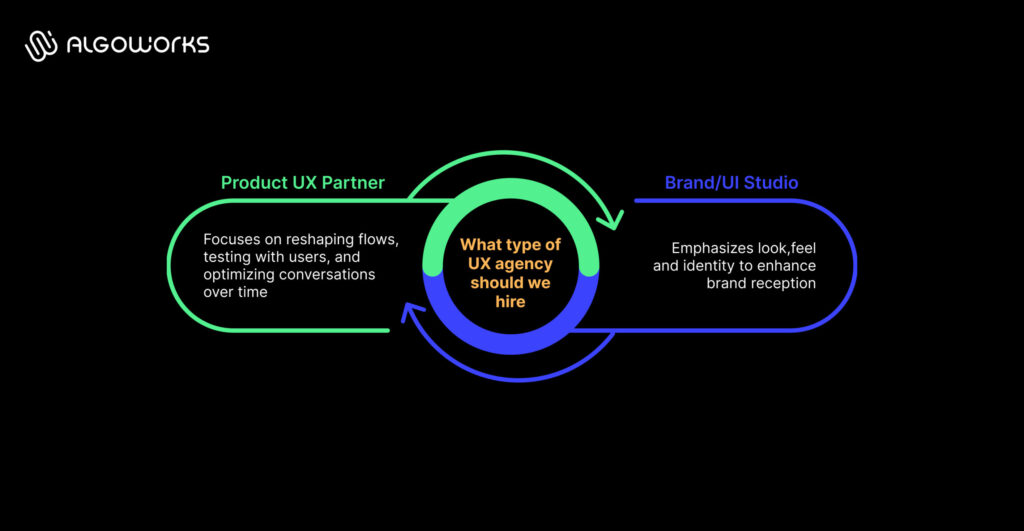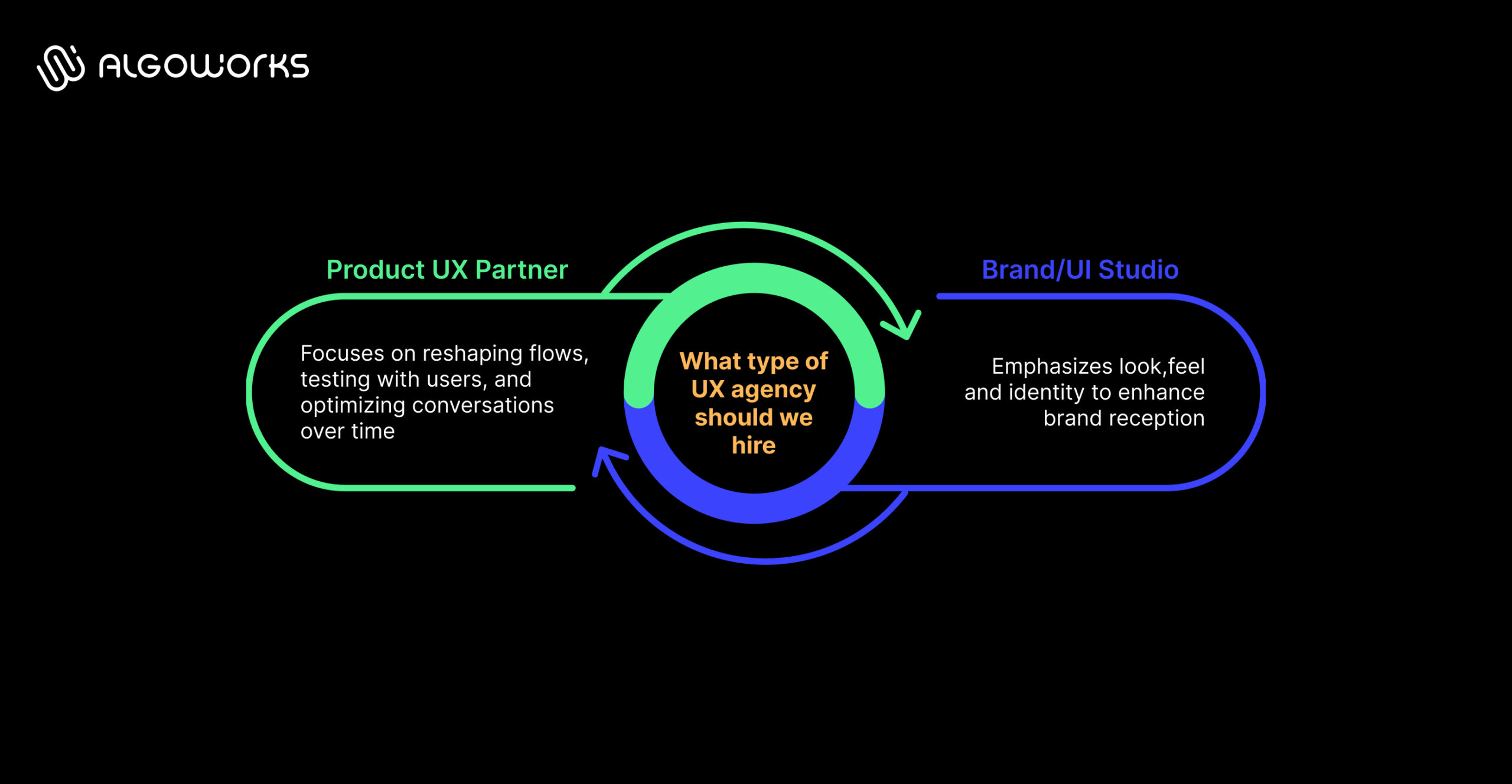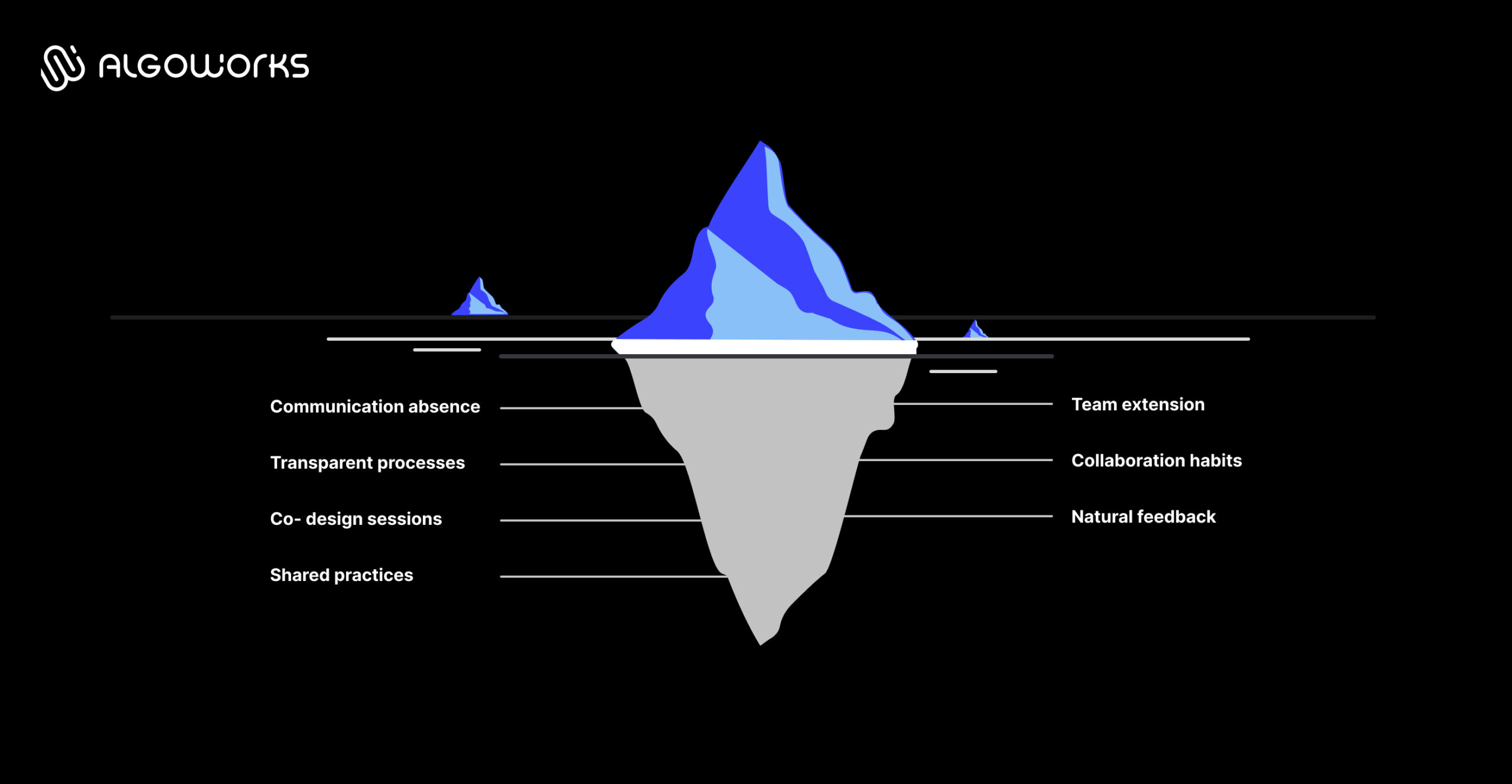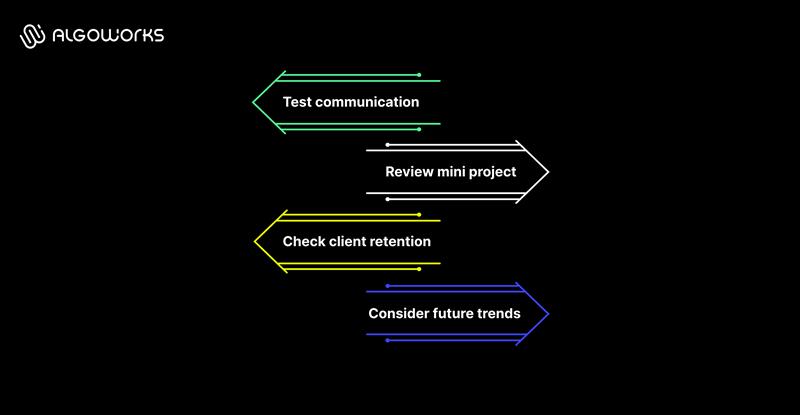A UI/UX design agency guide: Your selection checklist

Choosing a UI/UX design agency used to be simpler. That approach doesn’t work anymore, even though you could just look at portfolios, meet a few creative directors, compare quotes and sign the one that “felt right.”
Every UI/UX design agency today claims to do strategy, user experience (UX) research and even artificial intelligence (AI)-led design. Yet the real distinction lies in their grasp of human behavior and how deeply they understand people, not just pixels, despite everyone saying they “transform experiences.”
Algoworks has seen this shift up close. That blend of psychology, design and system thinking is what separates functional design from transformative experience, as our design teams often work alongside engineering and product stakeholders, helping enterprises connect human insight with business clarity.
A capable UX partner connects business logic with human insight and technical execution, designing experiences that function elegantly and scale intelligently.

How to frame your search
Before you start comparing agencies, pause and clarify what you actually need. Or perhaps you’re seeking a UI/UX design agency focused on look, feel and identity? Are you looking for a product UX partner who can reshape flows, test with users and optimize conversions over time?
Both are valid; but confusing one for the other is where many teams go wrong. What problem are you solving and what’s broken in your current experience? Define your business outcomes early. How will you measure success; conversion, retention, task efficiency or brand perception?
These questions are a must and that is how we begin too; by understanding what success means for the users and your business.
The 2025 UI/UX agency checklist: what to look for
Here is the checklist you should follow before you hire any UI/UX design agency. This is where you should start your exploration:
Strategy and research depth
A good UI/UX design agency doesn’t start with Figma. Ask how they approach discovery, as they start with curiosity. Do they talk about friction points, user journeys, behavioral mapping, data triangulation or just demographics and personas?
At Algoworks, discovery often means shadowing real users, combining qualitative insight with analytics and heatmaps to uncover intent. It’s about connecting behavior with motivation rather than just collecting data.
If the UI/UX design agency’s research leads directly into business-aligned design decisions, you’ve found people who understand the full picture.

UX process and deliverables
Many agencies show a polished process diagram: research, wireframe, test and deliver. What do those steps actually mean for a UI/UX design agency, though?
Who runs the usability tests? Mature agencies will share not only their deliverables but how they adapt them to your context. Do they iterate based on real data or internal assumptions? How are design decisions validated?
At Algoworks, UX is treated as a living conversation between design and engineering; tested in real environments, refined through data and validated by outcomes. UI/UX design agency isn’t a one-time output; it’s a conversation that continues until your users stop struggling in their experience.
AI and automation use
AI is everywhere, but let’s be honest; most teams use it to save time, not to think smarter. For instance, you want a UI/UX design agency that uses automation to augment insight, not replace it:
- Using Everyday AI to analyze usability recordings and cluster behavioral patterns.
- Generating rapid wireframe variations to test hypotheses faster.
- Automating accessibility scans or microcopy checks.
The best UI/UX design agency teams, including ours, treat AI in UX as a quiet collaborator; something that speeds up research and discovery but never replaces human intuition or empathy.
Accessibility and inclusivity
This is where credibility UI/UX design agency shows its maturity. It’s a mark of design maturity, not just an add-on.
Ask how they test for inclusive design. Accessibility should never be a compliance task for any UI/UX design agency. Do they screen readers, use contrast ratios, test for motion sensitivity, explore language options or examine cultural tone? Within our design systems, it’s embedded from the start; tested across devices, environments and visual sensitivities so experiences feel natural for everyone.
A responsible UI/UX design agency builds with this mindset that doesn’t just design for ideal users; they design for real people.
Industry experience and scalability
Design doesn’t exist in isolation from context. A UI/UX design agency that understands the regulatory, behavioral or technical nuances of your industry will save you months of iteration.
Working across Salesforce, Azure and AWS ecosystems has shown us that great design only scales when it’s grounded in engineering realities. Component logic and documentation that hold up under enterprise load are essential for design systems that need governance.
Scalability matters too for any UI/UX design agency. The difference between creative studios and experience partners often comes down to operational maturity. Ask how a team handles multi-product environments, complex rollouts and cross-functional collaboration.

Collaboration and communication process
Design fails in the absence of communication. Rather than acting as outsiders delivering “assets,” the best UI/UX design agency act like extensions of your internal team. Look for transparent sprint cycles, open documentation and real-time collaboration habits; shared tools, async updates and quick decision loops.
From our side, co-design sessions, open prototypes and design critiques are the norm. That’s when UI/UX design agency stops being a deliverable and becomes a shared practice. When collaboration feels natural, feedback becomes productive.
Post-launch optimization and measurement
Too many projects end at delivery. However, that’s where the real UX work for a UI/UX design agency should begin.
Ask how the agency measures success after launch. Do they offer continuous improvement sprints or UX audits? Are they track KPIs like conversion, completion rate or support tickets?
The strongest UI/UX design agency partners integrate design with performance; turning analytics into ongoing improvement loops. We treat design as a living system, measured and tuned after every release, because that’s where ROI is earned.
Read: The AI revolution – how smart, adaptive designs are shaping the future of UI
How great design relationships actually work
When you find the right UI/UX design agency, the rhythm changes. They seek understanding rather than chasing approvals. Their goal is not just to present; they challenge.
You’ll notice discussions shifting from “how should this look?” to “how should this feel for the user?” Testing assumptions in small, rapid cycles becomes standard practice. They’ll involve your developers early and share prototypes with stakeholders before finalizing.
That’s the rhythm we’ve built into our own practice; transparent, evidence-driven and deeply collaborative.
Agency search red flags
There are a few red flags you should look out for during your UI/UX design agency search.
- Many agencies rush into design without first understanding what you’re trying to achieve.
- Their portfolios look impressive, but you’ll notice there’s little mention of measurable results.
- When asked about their process, they tend to stay vague or skip the details.
- Some depend heavily on prebuilt templates or AI-generated layouts instead of original thinking.
- And often, their teams are missing key roles like researchers or UX strategists; the people who make good design actually work.
If communication feels scripted or feedback feels dismissed, stop there. Those patterns rarely change post-contract with any UI/UX design agency.
How to test before you trust
Start small. Observe how they handle ambiguity once you run a discovery sprint or heuristic audit before the full engagement. Are they asking sharp questions? Do they simplify complexity or avoid it?
Review their deliverables from that mini project. A good UI/UX design agency will leave you with clarity, not confusion. Are their insights actionable or generic? Also, talk to past clients not just for testimonials, but to understand how they worked together. Retention rate often says more than case studies ever can.

What’s next for UX partnerships
The next few years will belong to agencies that blend design, psychology and intelligent systems seamlessly.
UX will keep moving closer to continuous improvement, where insights flow back into design every sprint. Freeing humans to focus on empathy and experimentation, AI will handle the repetitive tasks. The best UI/UX design agency partnerships will feel less like vendor contracts and more like shared learning systems.
Parting thoughts
Choosing a design service isn’t about ticking boxes. The right partner will not only build interfaces; that partner will build understanding. It’s about choosing how your product will evolve.
If a UI/UX design agency team makes you think differently about your users in the first meeting, pay attention. That’s the start of something worth investing in. Contact Algoworks to get started.
FAQs
1. How much should a UI/UX agency cost in 2025?
Rates vary by region, scope, research depth and complexity per project.
2. What’s the difference between a UI and UX agency?
UI focuses on the visual layer; UX shapes the logic, flow and emotional journey. Good agencies integrate both, but UX drives the “why” behind the design.
3. How can I tell if an agency truly does research?
Check for anonymized research artifacts journey maps, user insights, testing reports. If they can’t show any, chances are they don’t do it seriously.
4. Do AI-powered design tools make human designers less relevant?
No. They make mediocre designers irrelevant. Skilled UX teams use AI to accelerate understanding, not to replace empathy.
5. What should I prepare before reaching out to agencies?
Have clarity on your goals, target users, tech stack and success metrics. The more context you provide, the faster the agency can deliver meaningful value.
